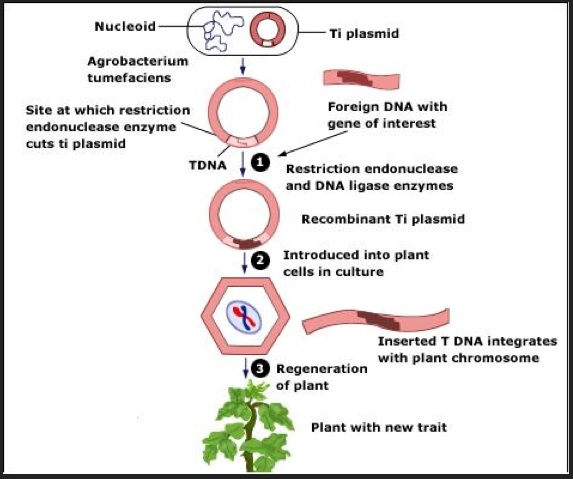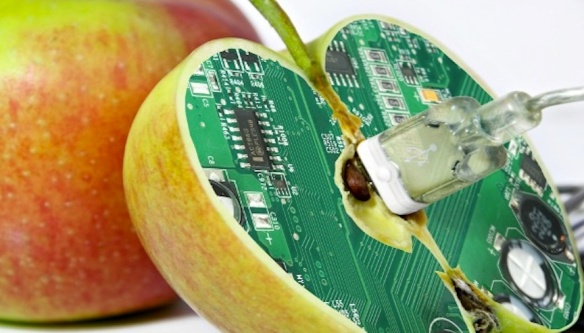
Hey All,
I did promise more on the Science Theories section so here it is. Roughly, three weeks ago I was invited to debate the topic of this post on the Africa Today show for Press TV by Henry Bonsu. It was a great experience and brought back to light an subject that was very much in the public eye over 10 years ago but has since slipped under the radar.
The reason for this re-interest in the subject was Kenya’s recent decision to ban the import of Genetically Modified Organisms (GMO’s). I want to take a moment to explain the science behind GMO’s before getting into the debate.
The general feeling behind genetically modified foods or organisms in Europe and the UK is an instant flurry of negatives emotions. I know this, because I get to hear the general public express those emotions at a geneticists quite often. This is by far not the public’s fault, however, it is exactly what the media has lead you to feel and think. I am about to tell you why, but first the hardcore science explanation.
I simplify genetically modified organisms as super-speed Mendelian genetics. Gregor Mendel (1822–1884) spent many years cross pollinating different strains of plants, mainly peas, in-order to create the best/strongest/weakest/largest/smallest version of the plant/pea. He noticed that some species had certain traits that he deemed worthy and others he deemed unworthy, for want of another word. Mendel demonstrated that the inheritance of certain traits followed particular patterns, now referred to as the laws of Mendelian inheritance. One of the most significant discoveries in Science. Absolutely brilliant stuff for that time.
After completing his work with peas, Mendel turned to experimenting with honeybees to extend his work to animals. He produced a hybrid strain so vicious they were destroyed, but failed to generate a clear picture of their heredity because of the difficulties in controlling mating behaviours of queen bees. He also described novel plant species. What is important to note here is that this process is seen as “natural” by the media as it didn’t happen in a laboratory. However, it is not “natural” as it was forced by a series of events created by a person, in this case Mendel. For it to happen naturally it would mean Mendel had to live three life-times for us to gain the same results.
Now fast-forward to today’s modern day science, following the “genetic revolution” and this same process is no longer “natural” but “un-natural” because it happens much faster in a laboratory and we are more precise about which traits we deem as worthy. Instead of waiting for each new plant to produce a new hybrid, we can now insert the desired DNA or genetic information that produces the hybrid we want, more precisely and dare I say it, more safely. Why? because we have the technology and means to do it, we can read whole DNA sequences now. It is all very simple and very routine and has been in action for approximately many years now. Furthermore, no absolute health issues have been associated with GM foods which have been in our food chain for over 20 years now, whether you knew that or not is another matter.
Here is a simplified scientific diagram of how it works;

I ask you this, why have we not been asked to go back to a slower internet speeds becasue of the probable health risk which has been associated with technological radiation and its increased connectivity in the future? This also has not been absolutely proven. Maybe the media hasn’t told you to do so yet? I wonder why….could it be financial death for Western Industries?..who knows…but I am just saying..it is worth mulling over..

Now to the debate. Globally, GM research is led by six large multinational companies in industrial countries, the USA being the largest. These corporate and capitalist companies drive to sell the GMO’s they produced and patented to Africa and not Europe.
Although human development, food security & environmental health issues are often the focus of marketing strategies for companies it is unlikely that such altruistic concerns are driving their investment! The developing agricultural state of Africa is a potential market as a consumer especially as Europe is not receptive to GM products (much aided by the media).
In developing countries, Brazil, Argentina, China & India are leading in independently producing GM products. In Africa the countries which have GM capacity include South Africa, Zimbabwe, Kenya, Nigeria, Mali, Egypt & Uganda but very minimally. Others are only recently starting to engage in research & field trials.
As a scientist, I do not have a problem with GM crops, food or research. In-fact I would go as far as supporting it. Economic world analysis predict a major food crisis in the near future. A food crisis that I believe Africa could avoid if it was to invest in it’s own GMO research and development.
The issue is the private sector dominance has meant the focus is on developed country concerns e.g. improved crop quality instead of drought tolerance or yield enhancement, saving labour costs associated to herbicides and insecticides. Insect resistant crops are particularly important for Africa due to infestation losses leading to approximately 15% of losses. In some cases, such as with the African cassava mosaic virus total loss of harvests has been reported. Genetically modified cassava could save African farmers large economic losses. So far the only way to stop it is intensive use of insecticides, which is expensive & also known to lead to biosafety issues later down the line such as those reported by the use of DDT (currently banned insecticide which was commonly used in the 90’s world-wide).
So what is the major problem here and why has Kenya taken such a strong stance? It is not without reason especially when you take a closer look at the industry and the politics or policies that control it.
Much like the pharmaceutical and music industries, the agricultural industry is also under the control of Intellectual Property (IP) patents and policies which are being monopolised by corporate capitalist companies mainly from the US and “west”.

Importantly, developing country considerations for balancing incentives to producers are very different from the US context. Multinationals based in the US and elsewhere who are investing large sums in biotechnology and plant breeding would need large markets for their products and strong patent protection on genes as well as on tools and varieties to protect their investments.
–
In other words, strong IP recognising plants and gene patents favours corporate investment, and arguably monopolistic tendencies while discouraging small enterprises and diversity of supply which is needed in Africa. Moreover, strong IP leads to higher prices for longer periods of time. China would appear to have no IP protection for its GM and the question being asked is if weak intellectual property protection becomes a constraint to innovation? This has now become a major challenge that policy makers face in China.
–
So it seems Africa is stuck between a rock and a hard-place. Do we say no and risk being the reason for Africa’s food crisis in the future? or do we fall prey to the corporate companies using our land for their own prospects. I always try to be optimistic and in my optimistic and perfect world a mid-way solution is possible. Developing countries in Africa have not developed research facilities and as such are years behind in-terms of biotechnology and innovation strategies. We need to catch up, invest and make it one of the most pressing policies for Africa’s development as a continent. Africa should rightly be the leading agricultural super-power of the world, we have been blessed with the most suitable land.
–
Currently, developing countries can license these transgenic biotechnologies and in some cases collaborate successfully with the west, for example Burkina Faso and the cotton industry. Another example to support my optimistic world exemplifies why research cooperation between developing countries and institutions or companies based in the developed world has been important in promoting transgenic research in Africa.
–
The Swiss Federal Institute of Technology (SFIT) in Zurich plans to collaborate with researchers in Nigeria, the UK and the USA on the African cassava mosaic virus (Sawahel 2005). This virus is transmitted to cassava by white flies when they feed on the plant. In parts of Eastern and Central Africa, epidemics of the disease can lead to total loss of harvests. Researchers at SFIT have used genes from a virus that periodically devastates cassava crops to create cassava plants that can resist the virus. Cassava is an important food crop in many parts of Africa and is strongly affected by genetic erosion, pest infestation and plant disease (Aerni,2005). Genetically modified cassava could save African farmers large economic losses. So far, the only way to curb the virus is by intensive use of insecticide to kill white flies. But this can be prohibitively expensive for subsistence farmers and can threaten their health and that of surrounding plants and animals (Sawahel 2005). This is when you have to weigh up the advantages and disadvantages of scientific innovations.
–
But the question still begs, can revenues from patent licenses finance research and development for small markets of developing country research? As we know from the pharmaceutical sector, strong patents can be an incentive to develop high price products for high income consumers, but can do little to encourage investment in high need products for low income consumers (as good example of this are retroviral drugs for the HIV/Aids epidemic). In the pharmaceuticals sector, this has led to large investments in diseases of the wealthy and neglect of diseases of the poor – or ‘orphan diseases’. Naylor et al (2004) have argued that a similar process could be at work with private investments in agriculture. Here is where the danger lies in my opinion.
–
I would like to conclude by saying no technology or human activity is completely risk free, people accept new technologies or sciences because they can see the potential benefits outweigh the potential risks. Public mistrust of governments & private sectors is validated in recent times. Policy makers need to be aware of this and better scientific information needs to be given to farmers and people in general. A key challenge in Africa is dealing with the information Gap. Kenya has 17 biotechnology research facilities and currently only one of them is investing in transgenic technology research for agriculture. I hope that they increase the research in this area and develop solutions for Africa by Africa.
–
The debate here is not black and white and I have so much more to say, although I could go on for much longer dissecting this issue, I would like to leave you with two very interesting chapters to read if you are interested. Click on this
link and this
link to really get stuck in.
–
Let me know what you think? Yay or Nay? Thank you for reading and I look forwards to your opinions and comments on this important topic.
Until next time, stay blessed.
Ex















